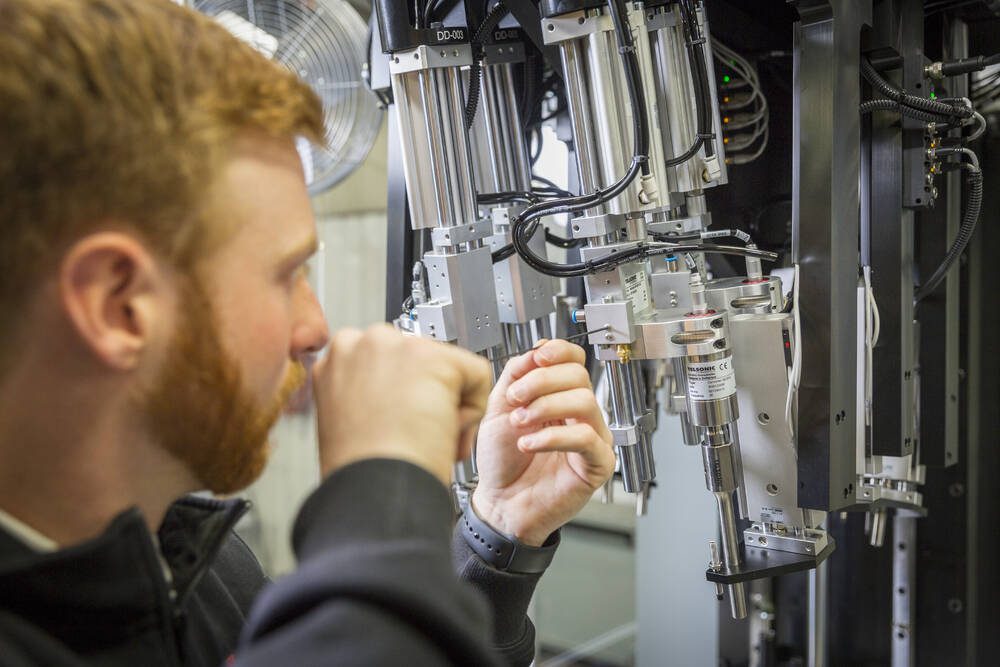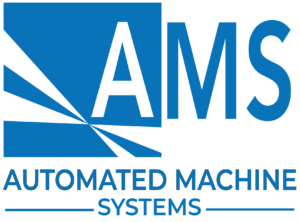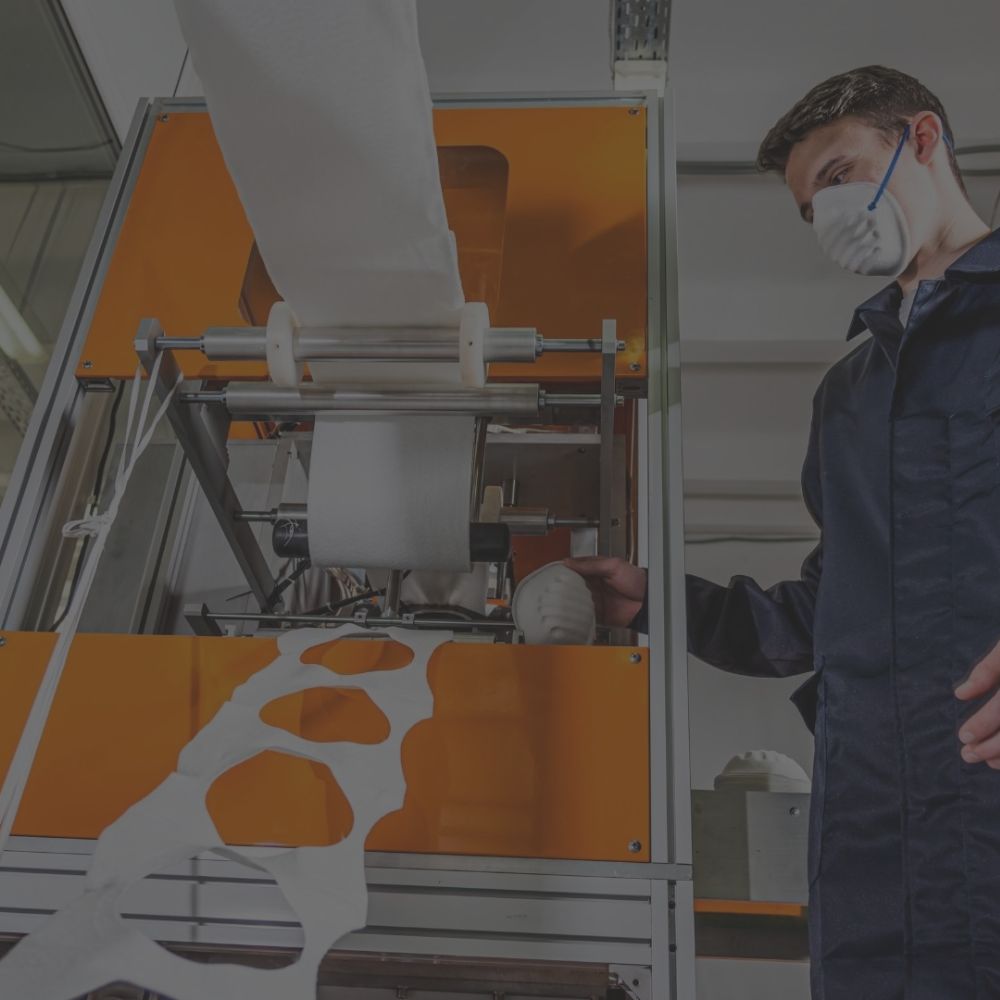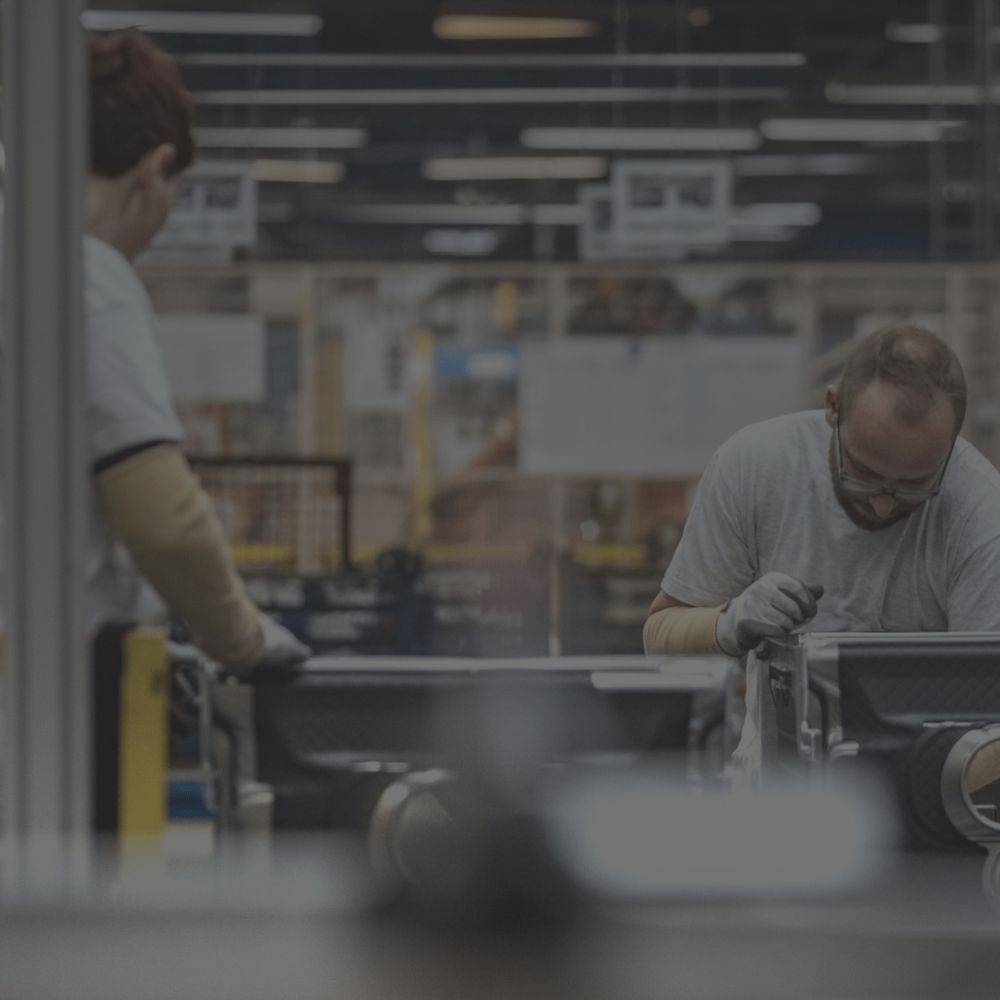Decades of experience in a range of industries
Proven processes for smooth delivery
Engineering and design expertise
The Role of Ultrasonic Welding in Industrial Manufacturing

Ultrasonic Welding Materials
Along with high-frequency vibration, ultrasonic welding is also dependent on the amplitude of those vibrations; that is, the length of the stroke that occurs at each vibration. Let's quickly divert to explain this concept.
Ultrasonic welding equipment has three main parts: the converter, the booster and the sonotrode (also known as the “tool” or “horn”). The converter converts electrical input from a power supply (the ultrasonic generator) to physical vibrations, which are then boosted by the booster, and physically applied to the parts being welded by the horn. The horn presses down onto the parts being welded, transferring its acoustical vibrations into the materials, creating frictional heat and coercing molecules to intermingle.
This welding action is specified by two values: amplitude and frequency. Amplitude is the physical dimension that the horn oscillates, and frequency is the number of oscillations that occur within a second. Therefore, a complete ultrasonic welding specification would read something like "20 µm amplitude @ 20 kHz frequency."
Reading this specification in plain English, we can see that the weld horn will move a dimension of 20 µm (microns) at a rate of 20,000 strokes per second. Engineers develop this specification through calculations and physical testing for each material and joint being welded, as every weld will take a different amount of force and motion to compel separate molecular structures into one another. Some materials take very well to ultrasonic welding due to their suitability for fluidizing in this way, whereas others will refuse to commingle entirely.
Ultrasonic Welding Applications
Considerations and Cautions in Ultrasonic Welding
Because of ultrasonic welding's relatively straightforward path to success, it also has a low threshold for failure when key steps are rushed or overlooked. Below, we describe a few of these key considerations to keep in mind when pursuing an ultrasonic welding solution.
For ultrasonic welding to reach its potential, joints and connections must first be properly engineered. Joint geometry, dimensions, spacing, orientation, area and thickness are all details that need to be worked out to result in a reliable, repeatable bond sufficient for mass production.
Before buyers select an ultrasonic joining system to invest in, we encourage sample testing to ensure that specifications between parts and systems line up properly. Using our in-house material test lab, the AMS team can help test and recommend ideal system design criteria using samples of your actual materials, rendering results that would be guaranteed in any ultrasonic welding system purchased from AMS.
Ultrasonic welding can be performed in manual, semi-automated or fully automated fashions, scaling up or down in sophistication as needed to best suit the size and complexity of products being assembled. Automation is key to reliably achieving advanced requirements such as hermetic sealing, joining dissimilar materials and minimizing weld times. We'll use a few of our own system models to showcase different levels of solutions:
- The PJ-301 model is a small-scale, cost-effective, PLC-controlled station particularly useful for low part variations at high volumes.
- The larger PJ-401 model is a large-scale, multi-material, multi-part layout, highly reconfigurable platform with outstanding productivity and very fast cycle times.
Welds can fail for any number of reasons, from improper fixturing to sonotrode misalignment, material contamination to movement during welding, and so on. Robust quality control testing and documentation must be implemented ahead of full production, tested and re-tested to confirm veracity over the entire life of the ultrasonic welding operation.






